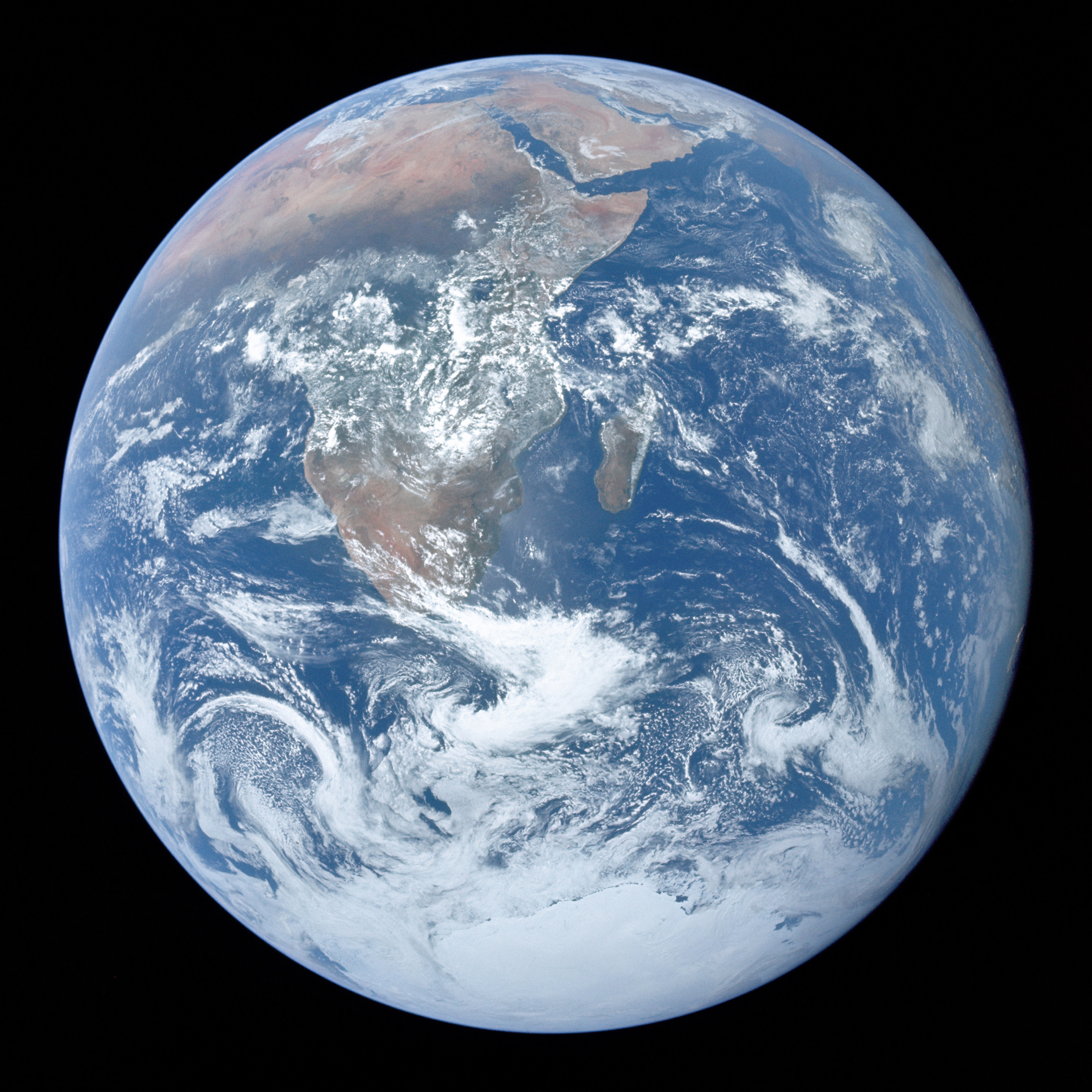
Planetary habitability
Planetary habitability is the measure of a planet's or a natural satellite's potential to develop and maintain environments hospitable to life.[1] Life may be generated directly on a planet or satellite endogenously or be transferred to it from another body, through a hypothetical process known as panspermia.[2] Environments do not need to contain life to be considered habitable nor are accepted habitable zones (HZ) the only areas in which life might arise.[3]
"Habitable planet" redirects here. For a list of potentially habitable planets found to date, see List of potentially habitable exoplanets.
As the existence of life beyond Earth is unknown, planetary habitability is largely an extrapolation of conditions on Earth and the characteristics of the Sun and Solar System which appear favorable to life's flourishing.[4] Of particular interest are those factors that have sustained complex, multicellular organisms on Earth and not just simpler, unicellular creatures. Research and theory in this regard is a component of a number of natural sciences, such as astronomy, planetary science and the emerging discipline of astrobiology.
An absolute requirement for life is an energy source, and the notion of planetary habitability implies that many other geophysical, geochemical, and astrophysical criteria must be met before an astronomical body can support life. In its astrobiology roadmap, NASA has defined the principal habitability criteria as "extended regions of liquid water,[1] conditions favorable for the assembly of complex organic molecules, and energy sources to sustain metabolism".[5] In August 2018, researchers reported that water worlds could support life.[6][7]
Habitability indicators and biosignatures must be interpreted within a planetary and environmental context.[2] In determining the habitability potential of a body, studies focus on its bulk composition, orbital properties, atmosphere, and potential chemical interactions. Stellar characteristics of importance include mass and luminosity, stable variability, and high metallicity. Rocky, wet terrestrial-type planets and moons with the potential for Earth-like chemistry are a primary focus of astrobiological research, although more speculative habitability theories occasionally examine alternative biochemistries and other types of astronomical bodies.
The idea that planets beyond Earth might host life is an ancient one, though historically it was framed by philosophy as much as physical science.[a] The late 20th century saw two breakthroughs in the field. The observation and robotic spacecraft exploration of other planets and moons within the Solar System has provided critical information on defining habitability criteria and allowed for substantial geophysical comparisons between the Earth and other bodies. The discovery of exoplanets, beginning in the early 1990s[8][9] and accelerating thereafter, has provided further information for the study of possible extraterrestrial life. These findings confirm that the Sun is not unique among stars in hosting planets and expands the habitability research horizon beyond the Solar System.
History[edit]
Earth habitability comparison[edit]
While Earth is the only place in the Universe known to harbor life,[10][11] estimates of habitable zones around other stars,[12][13] along with the discovery of thousands of exoplanets and new insights into the extreme habitats on Earth where organisms known as extremophiles live, suggest that there may be many more habitable places in the Universe than considered possible until very recently.[14] On 4 November 2013, astronomers reported, based on Kepler space mission data, that there could be as many as 40 billion Earth-sized planets orbiting in the habitable zones of Sun-like stars and red dwarfs within the Milky Way.[15][16] 11 billion of these estimated planets may be orbiting Sun-like stars.[17] The nearest such planet may be 12 light-years away, according to the scientists.[15][16] As of June 2021, a total of 59 potentially habitable exoplanets have been found.[18]
In August 2021, a new class of habitable planets, named ocean planets, which involves "hot, ocean-covered planets with hydrogen-rich atmospheres", has been reported.[19] Hycean planets may soon be studied for biosignatures by terrestrial telescopes as well as space telescopes, such as the James Webb Space Telescope (JWST), which was launched on 25 December 2021.[20]
Along with the characteristics of planets and their star systems, the wider galactic environment may also impact habitability. Scientists considered the possibility that particular areas of galaxies (galactic habitable zones) are better suited to life than others; the Solar System, in the Orion Arm, on the Milky Way galaxy's edge is considered to be in a life-favorable spot:[103]
Thus, relative isolation is ultimately what a life-bearing system needs. If the Sun were crowded amongst other systems, the chance of being fatally close to dangerous radiation sources would increase significantly. Further, close neighbors might disrupt the stability of various orbiting bodies such as Oort cloud and Kuiper belt objects, which can bring catastrophe if knocked into the inner Solar System.
While stellar crowding proves disadvantageous to habitability, so too does extreme isolation. A star as metal-rich as the Sun would probably not have formed in the very outermost regions of the Milky Way given a decline in the relative abundance of metals and a general lack of star formation. Thus, a "suburban" location, such as the Solar System enjoys, is preferable to a Galaxy's center or farthest reaches.[105]